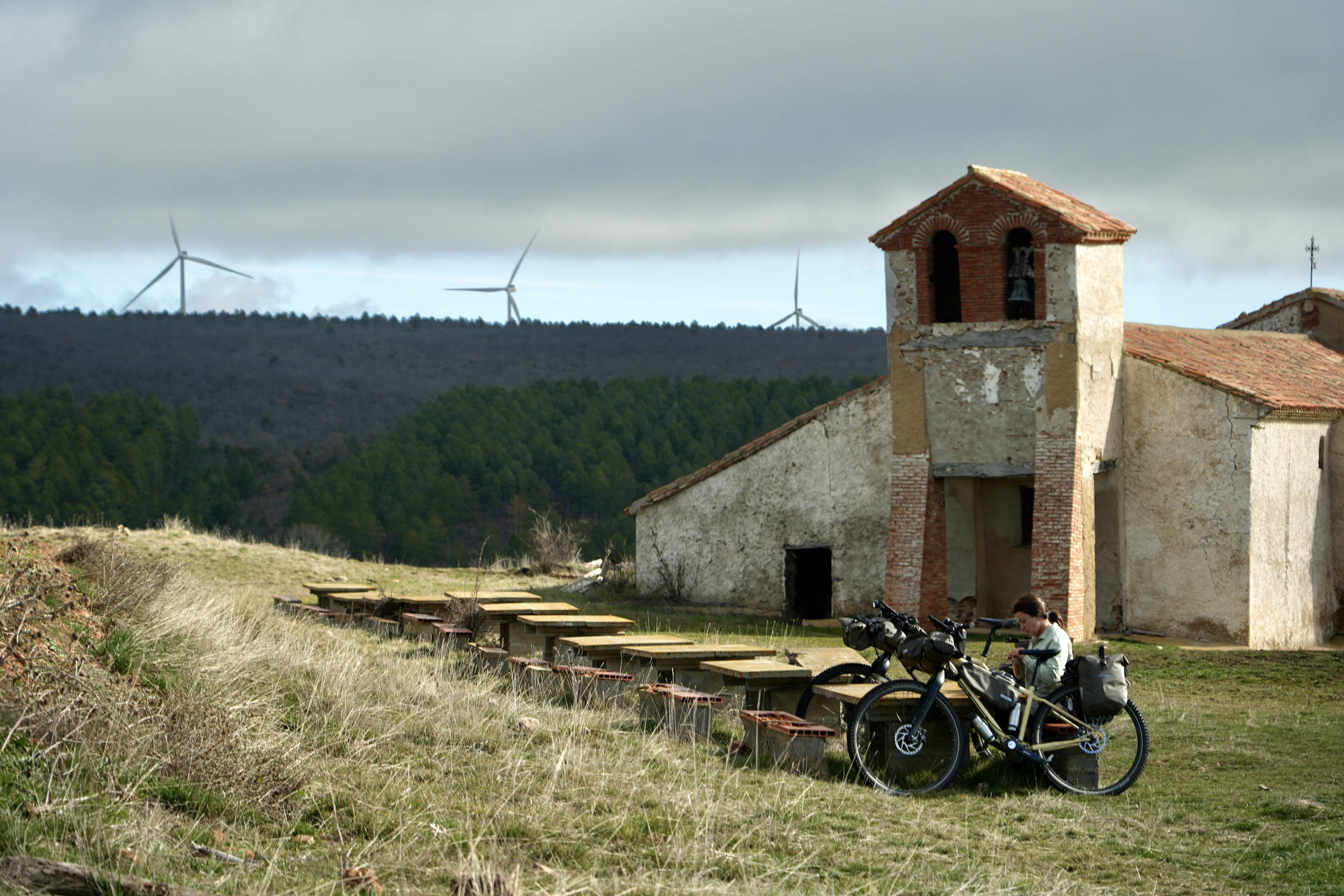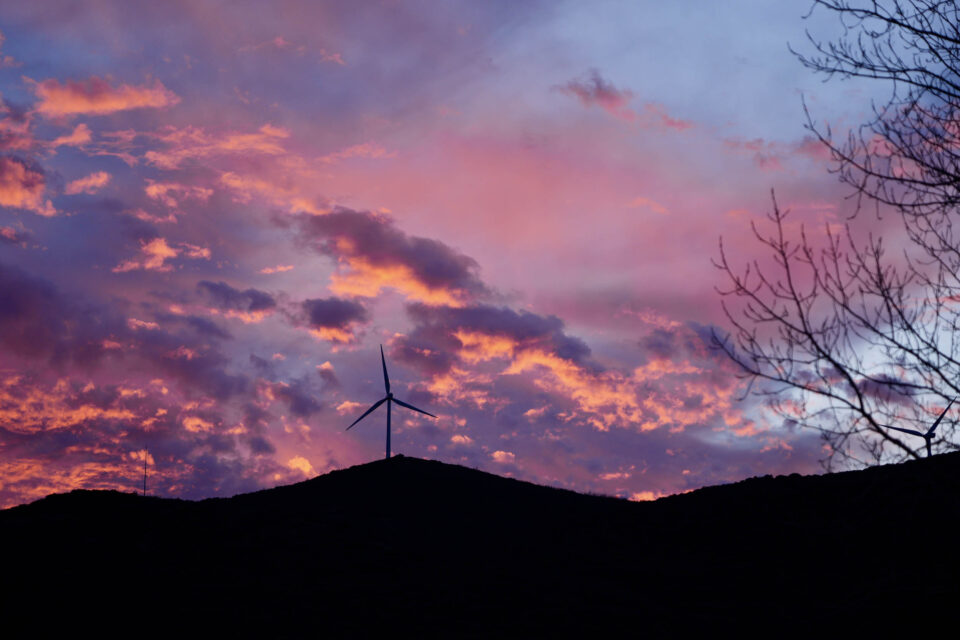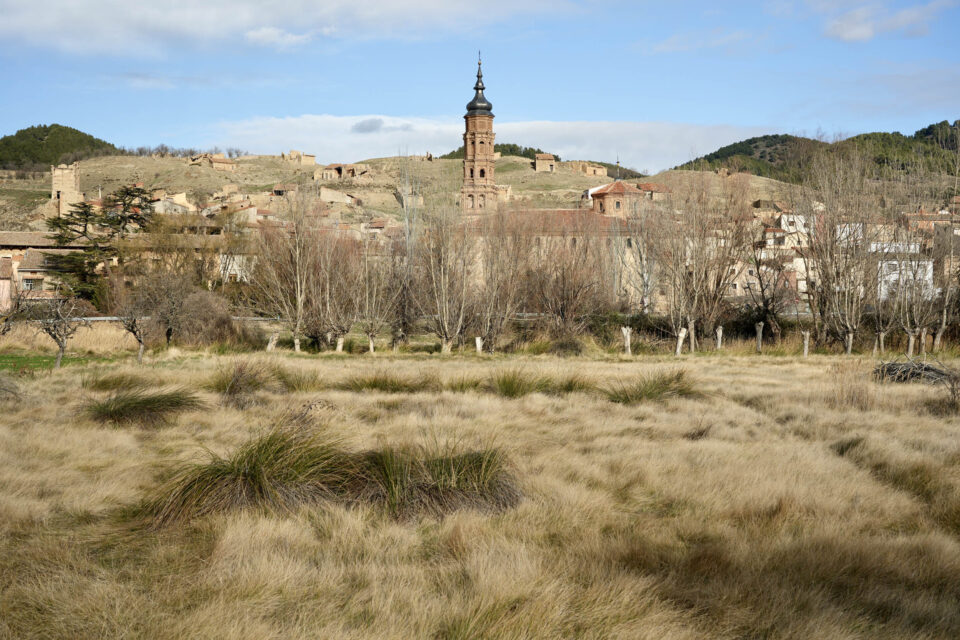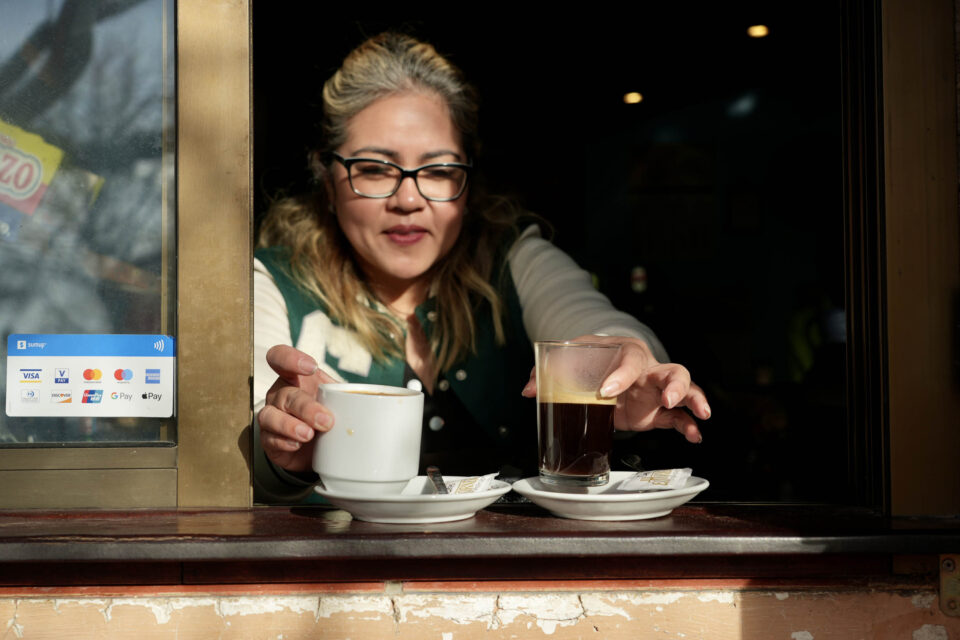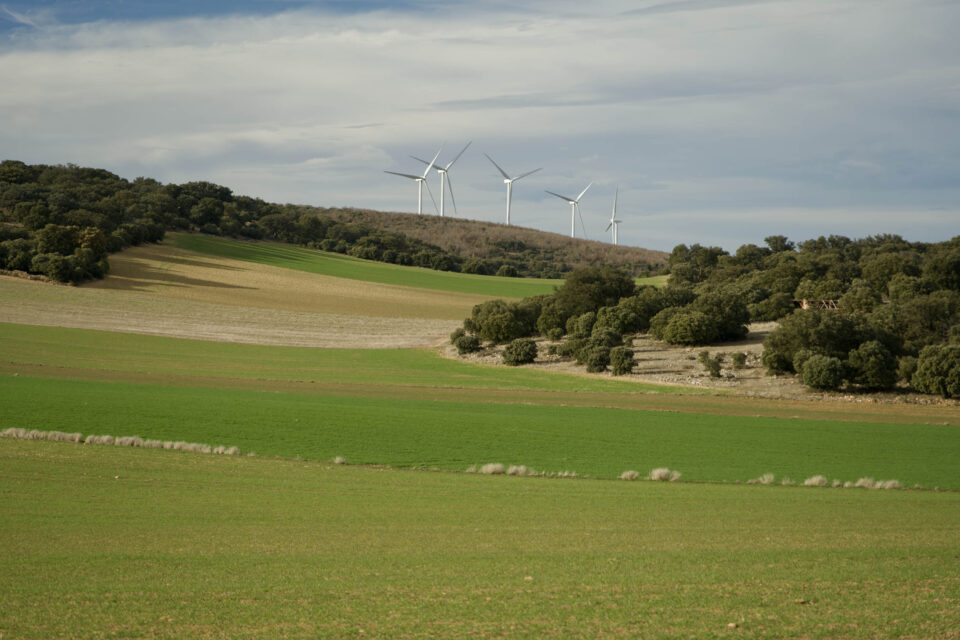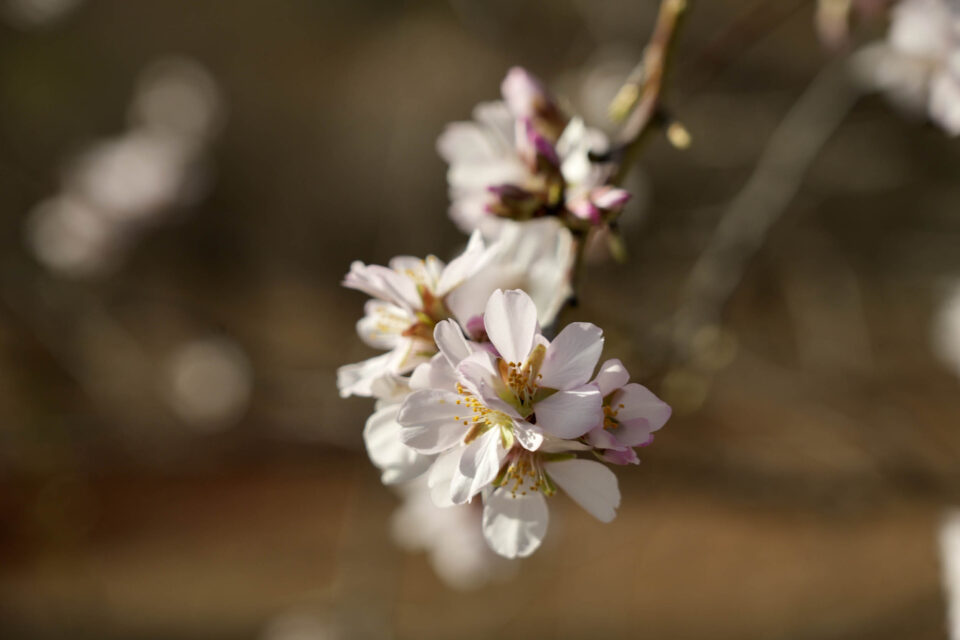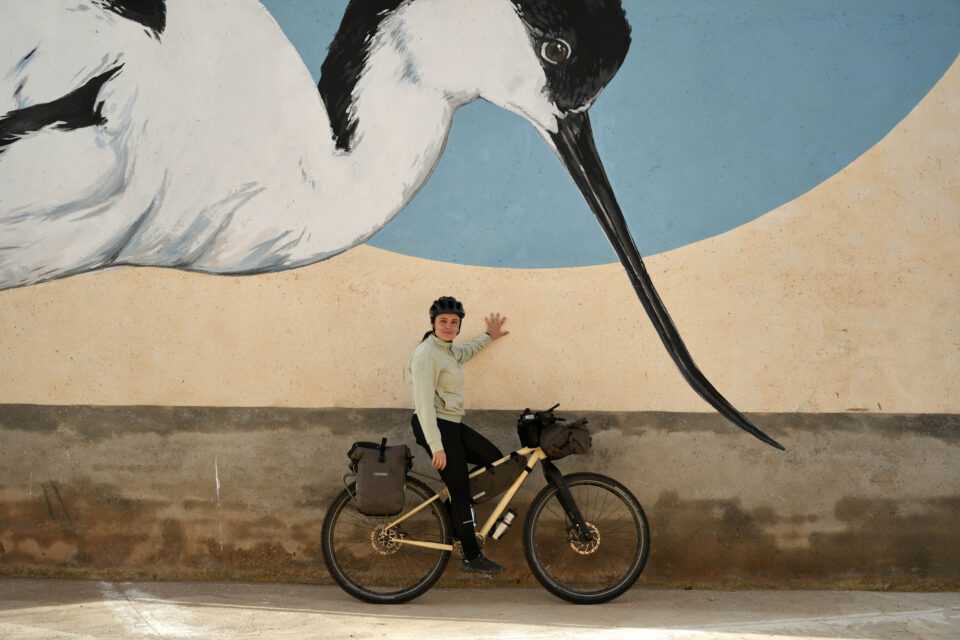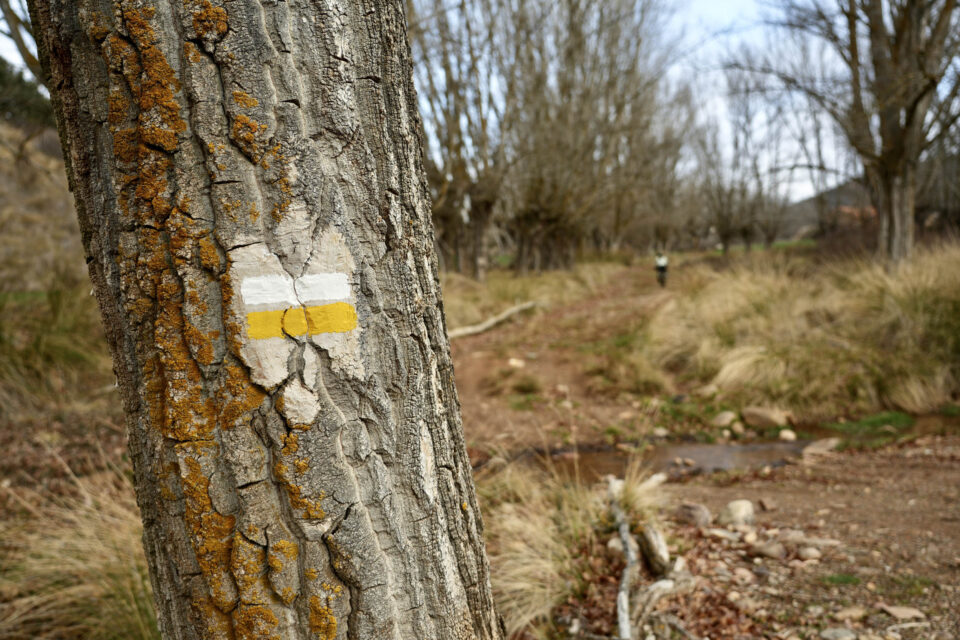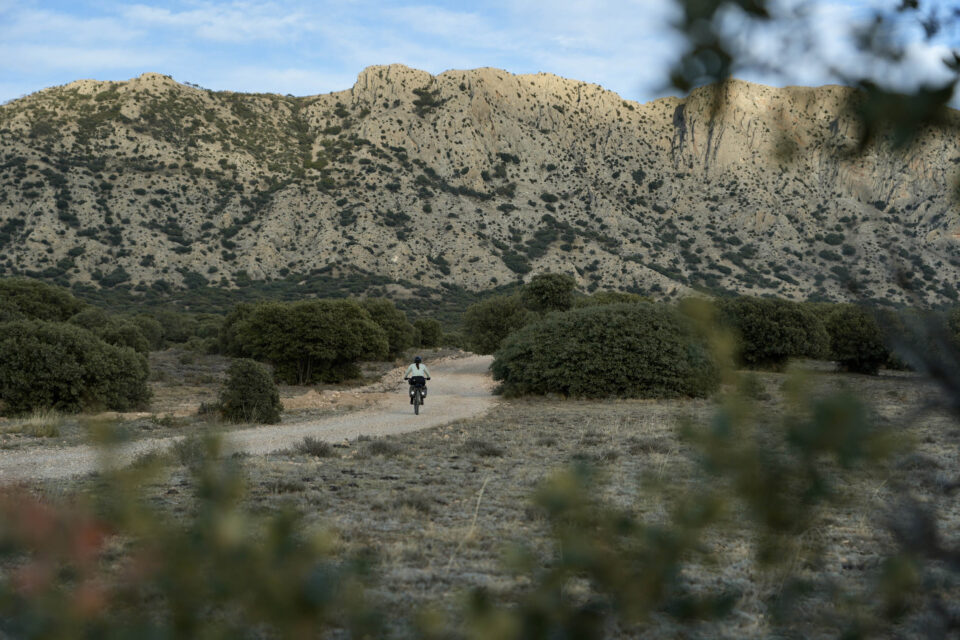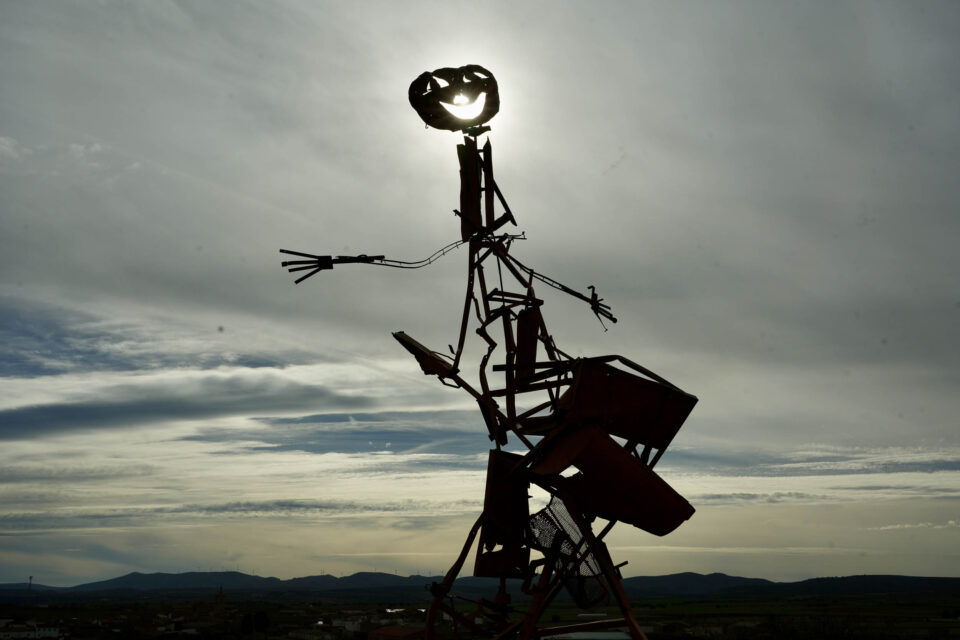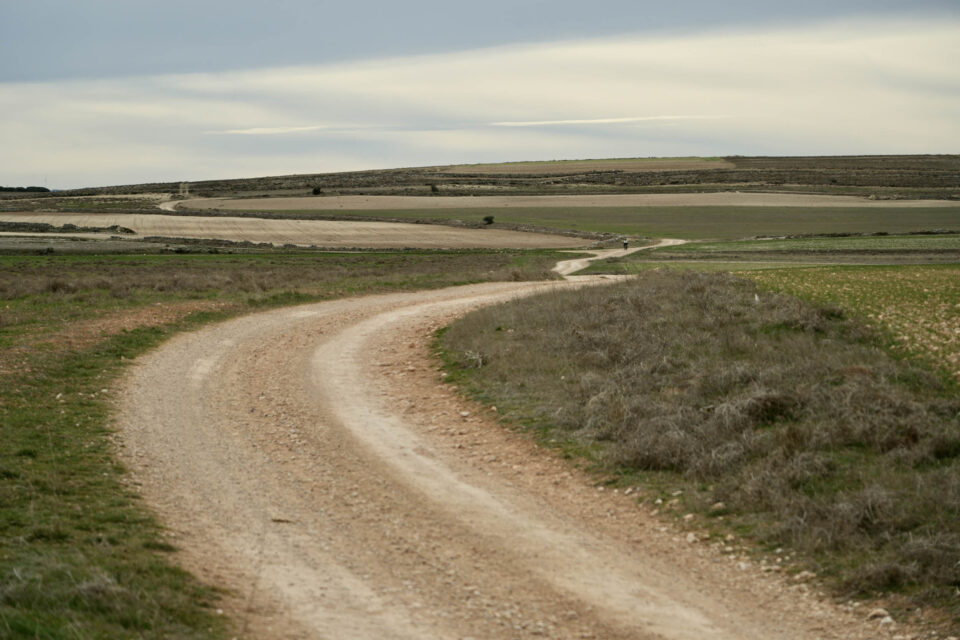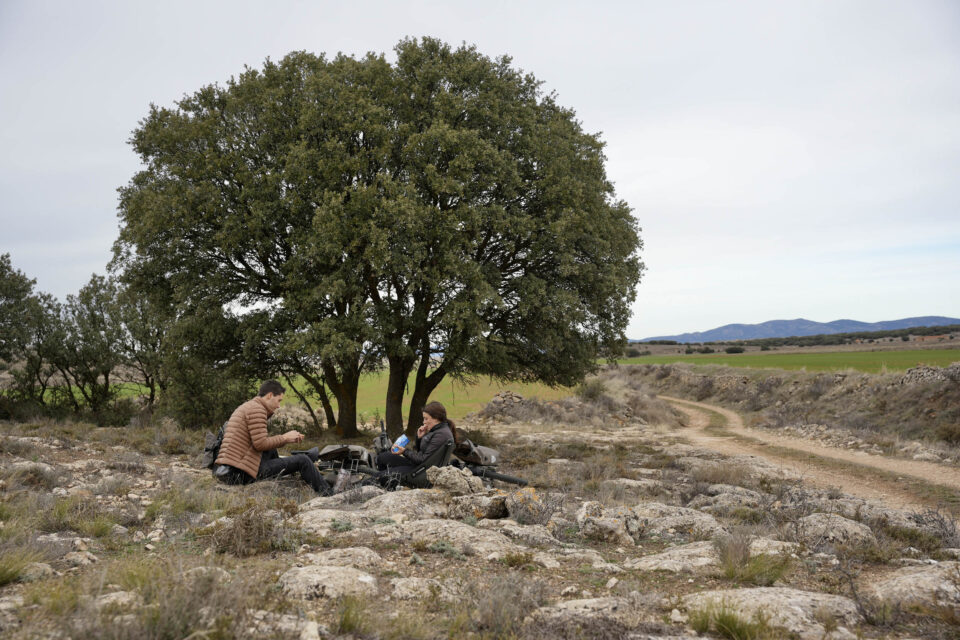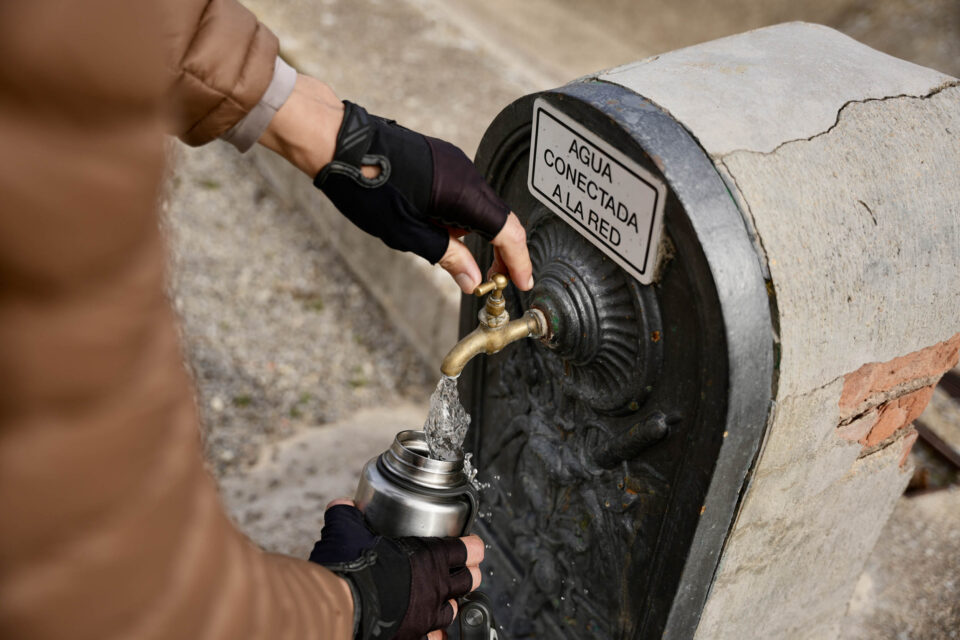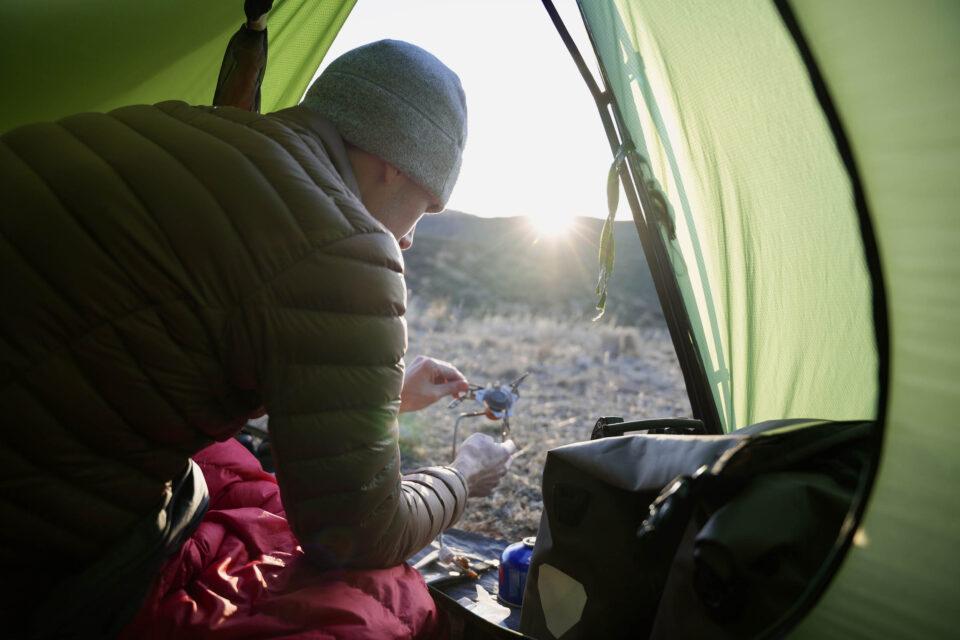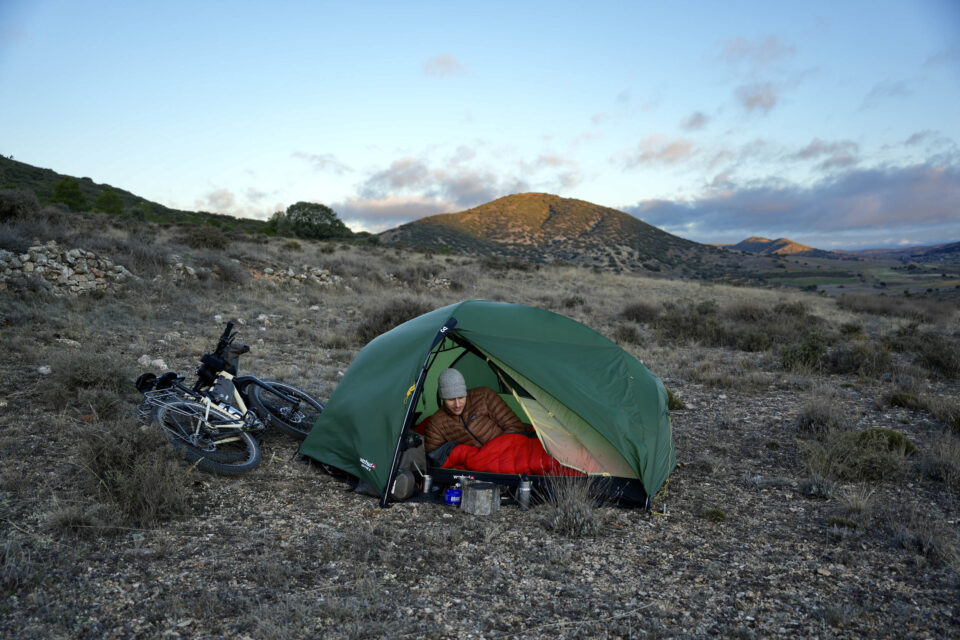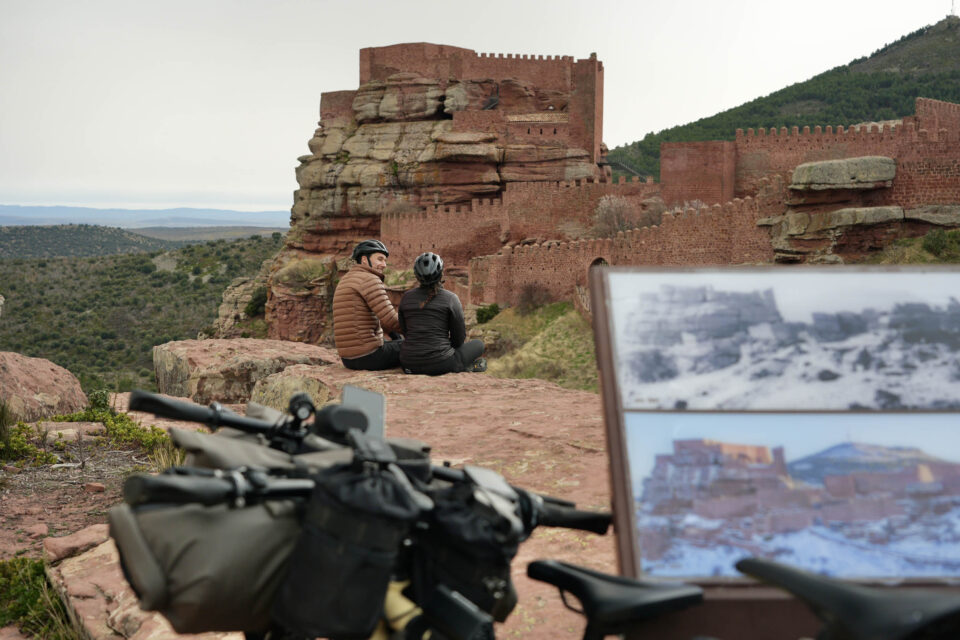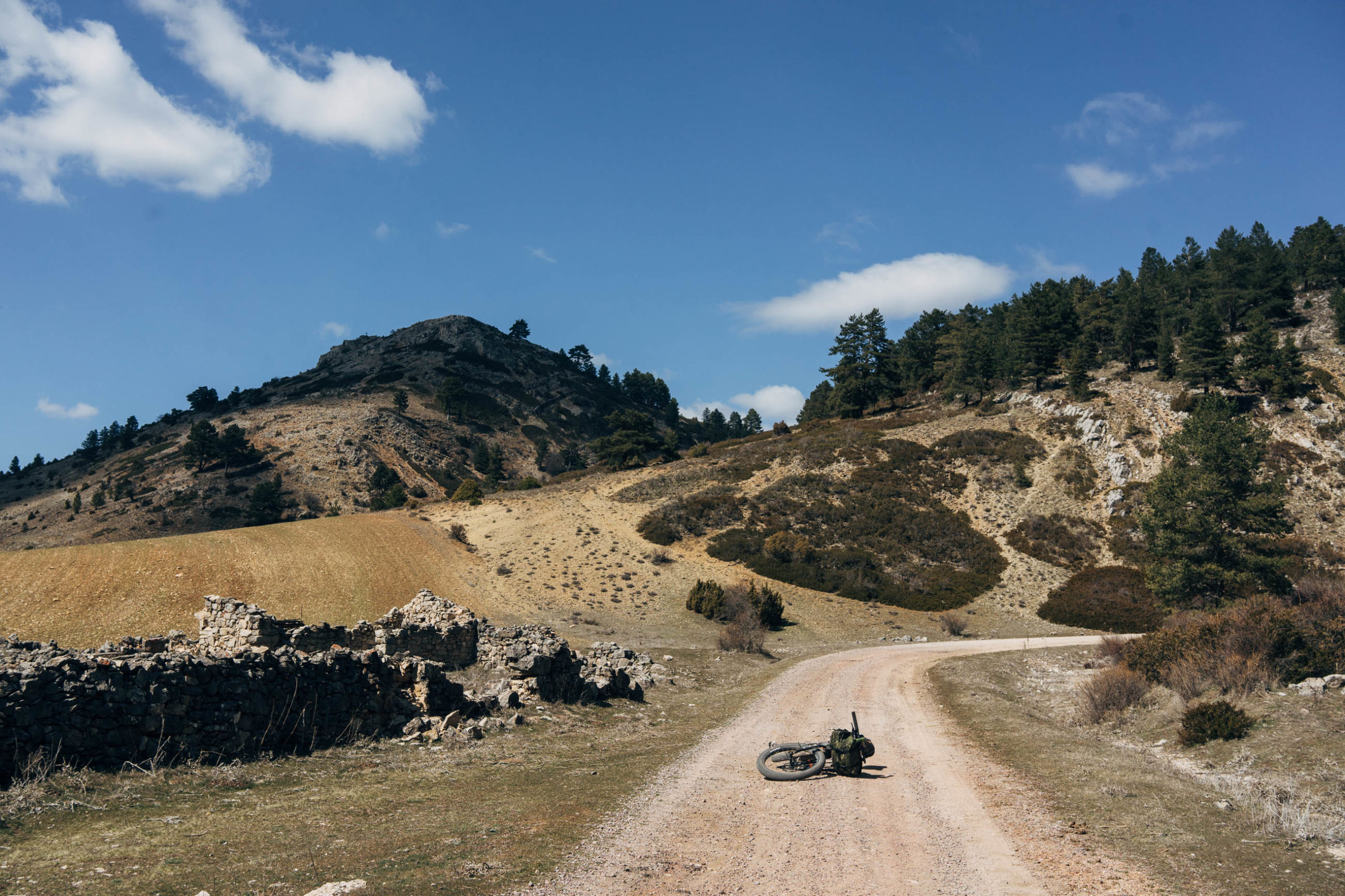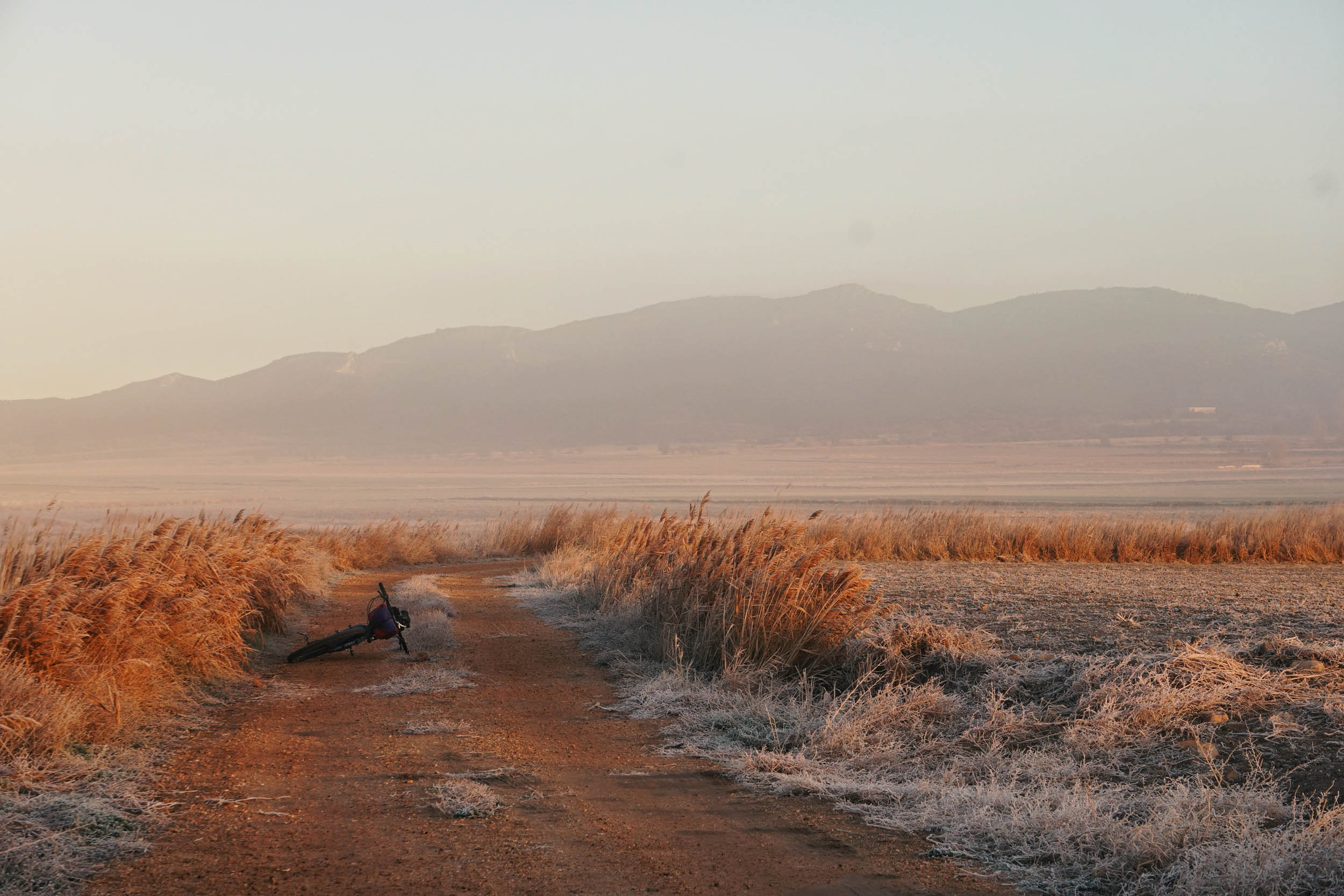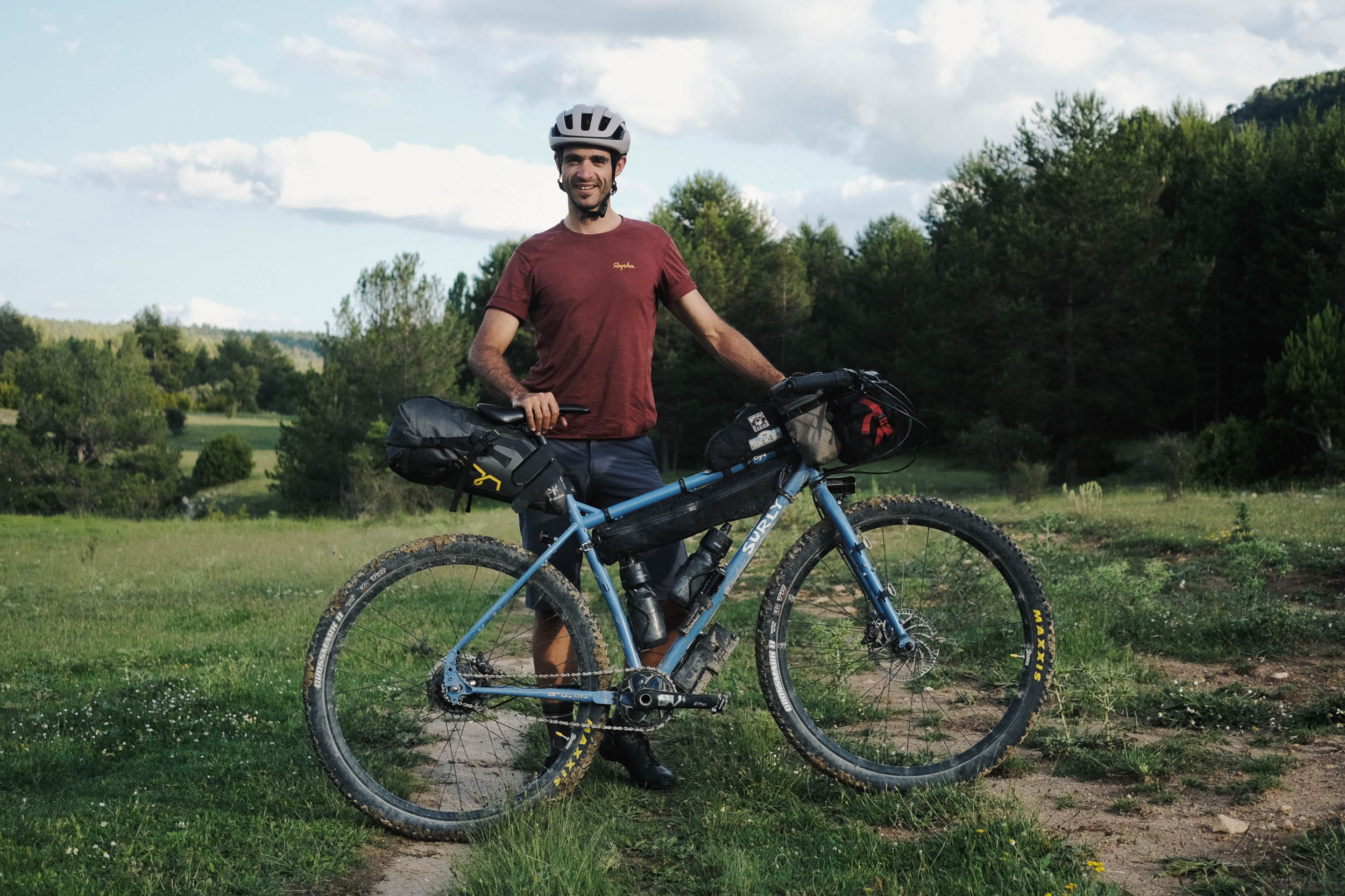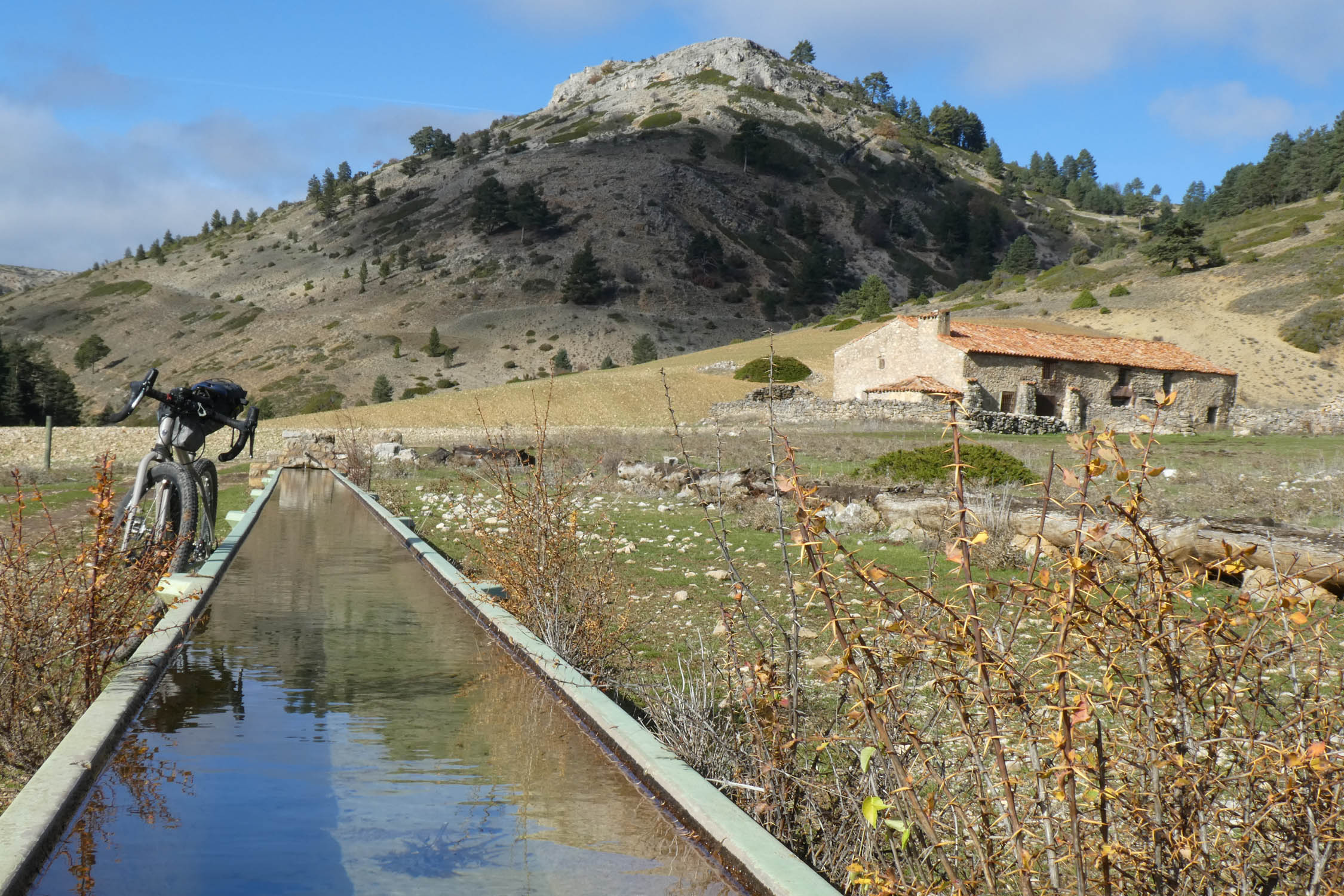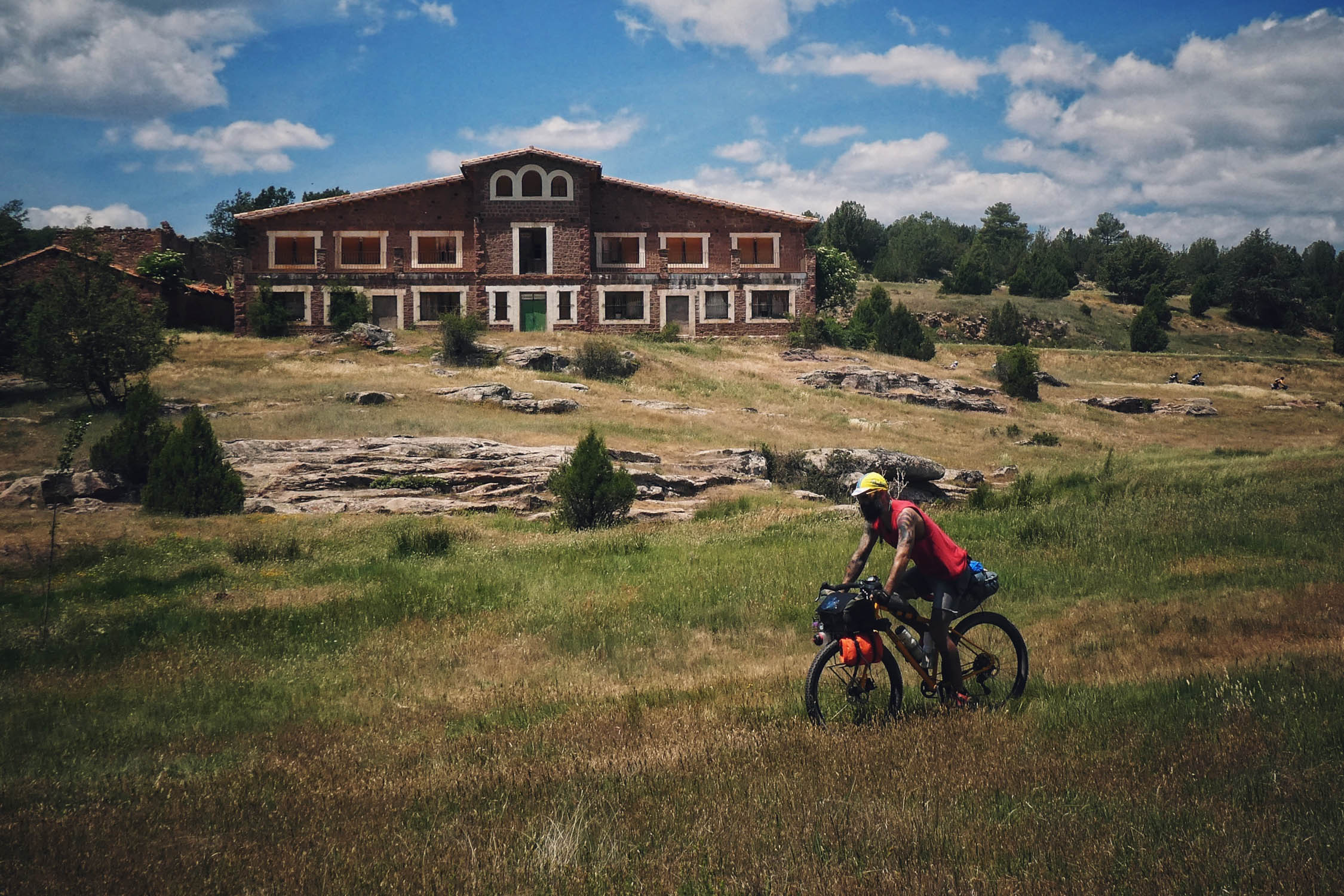Of Resilience, Hope, and a Slice of Heaven
Tristan Bogaard and Belén Castelló recently bikepacked the new “Of Resilience and Hope” loop in Teruel, Spain, and quickly understood its significance. Read Tristan’s reflection on this unique area in the “empty mountains,” the region’s struggle to stay alive, and what makes the route unforgettable here. Plus, find a beautiful collection of photos showcasing its sublime dirt roads and divine wild camping here…
PUBLISHED Mar 13, 2024
Teruel is one of Spain’s regions facing the challenge of depopulation. Among the Spanish people, it is known as a place where nothing of importance happens. Where the locals have a political group called “Teruel Existe,” Teruel Exists, and where good ham is sold. A running joke is that the police there are often so bored, they’ll fine you for just about anything in order to have something to do. But in reality, Teruel is a bustling natural environment that is mostly left alone to itself.
After a winter season spent in my home country of the Netherlands, focusing on passing a driving license exam and commuting back and forth on my Dutch city bike, I returned to Spain with a severe need to touch my tires to dirt again. Too much flat land, moist air, and not quite feeling like I was in the “right” place made me hungry for some Spanish mountain scenery, accompanied by its usual merits such as public fountains, a way of wild camping that would be unthinkable back in the Netherlands, and that sweet feeling of finding an open bar in even the smallest of pueblos.
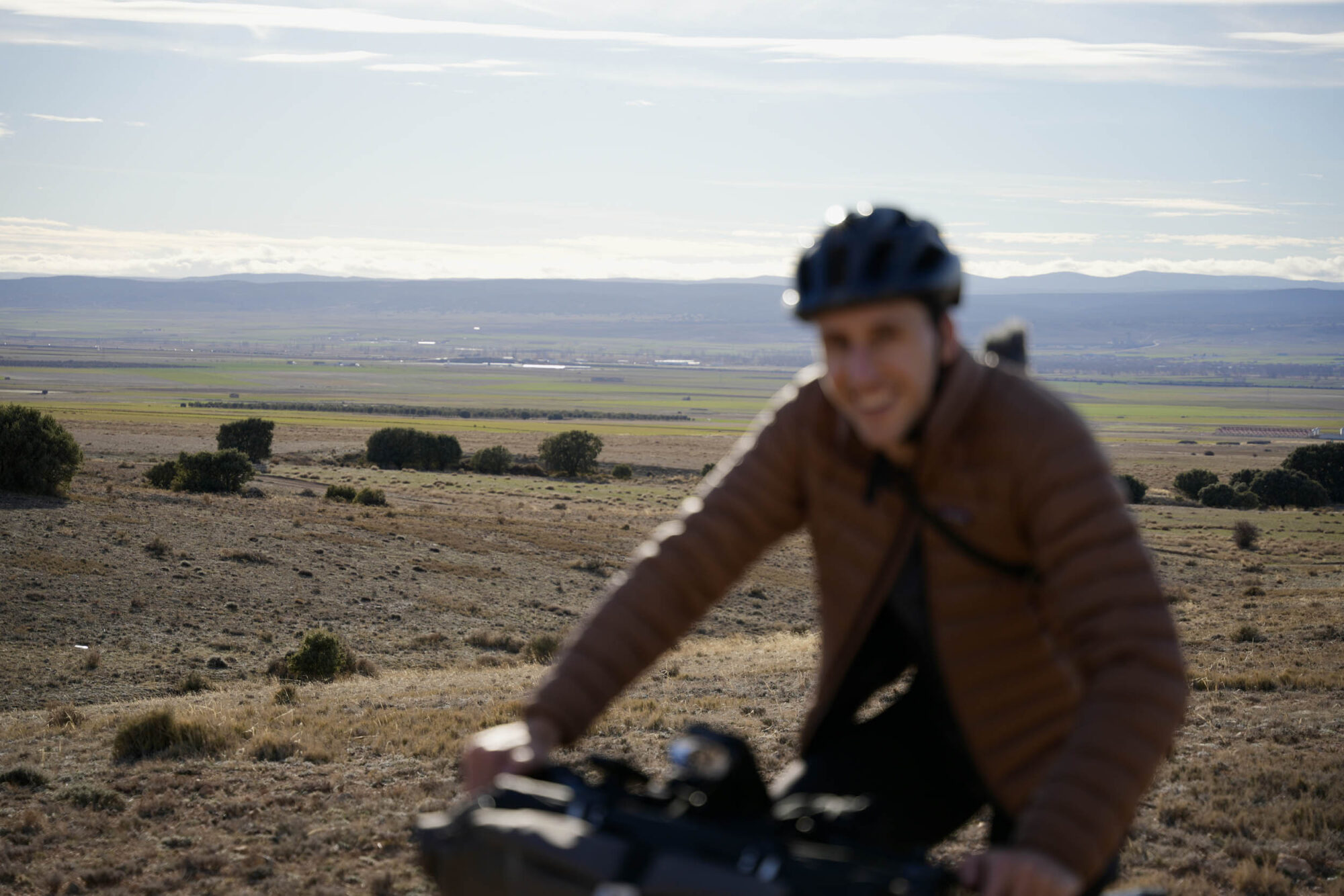
For some time now, Spain has become more and more of a home to me. Not in the least because of the fact that my partner, Belén, was born and raised in Valencia, but also since the geographical fabric of the Spanish mainland lends itself particularly well to bikepacking. There are benefits mentioned above—all considered “normal” by society here—and the landscape seems to almost embrace the act of riding a bicycle through it. Wherever you go, you’ll find unique colors in the dirt and a kind of rock specific to a region, contrasting weather patterns, and so many levels of elevation. Internationally, people think of Spain as beaches lined with arrocerias and palm trees, but it’s so much more than that. I’d consider it mandatory that, if I were to ever live here, I should’ve tried to see most of it with the help of my two legs and a lack of engine noise in my ears. Teruel became the start of that process.
Ernesto Pastor, a resident of Teruel, has been carefully laying out bikepacking routes all around the surrounding region over the past years. He’s done so with a single goal in mind: to create the network that’ll bring bikepackers to ride there, and in doing so, contribute to keeping this region’s dying towns from actually dying. With what I see as a passionate persistence, he’s created a collection of routes that intertwine with tiny settlements, hamlets, and medieval villages in order to give them a possibility of seeing new people, potentially foreign ones, and to interact with them on both a social and commercial level. Montañas Vacias, a route that most of you have probably heard about by this point, kickstarted this mission and has proven a fantastic success so far. I’ve not been able to ride it just yet, but within the bikepacking community, it has garnered a frenzy of interest ranging from lots of private publicity from riders to formal events being held on the route. You could tell any Spanish person today that, “Americans are flying to Valencia not to see that city, but to travel to Teruel and ride their bike there,” and shock them with this unexpected reality. Businesses in the vicinity of Montañas Vacias have even started opening up in the warmer seasons again to cater to their slightly odd new clients and their two-wheeled companions. Who could have imagined that a single route would actually create this much of an impact?
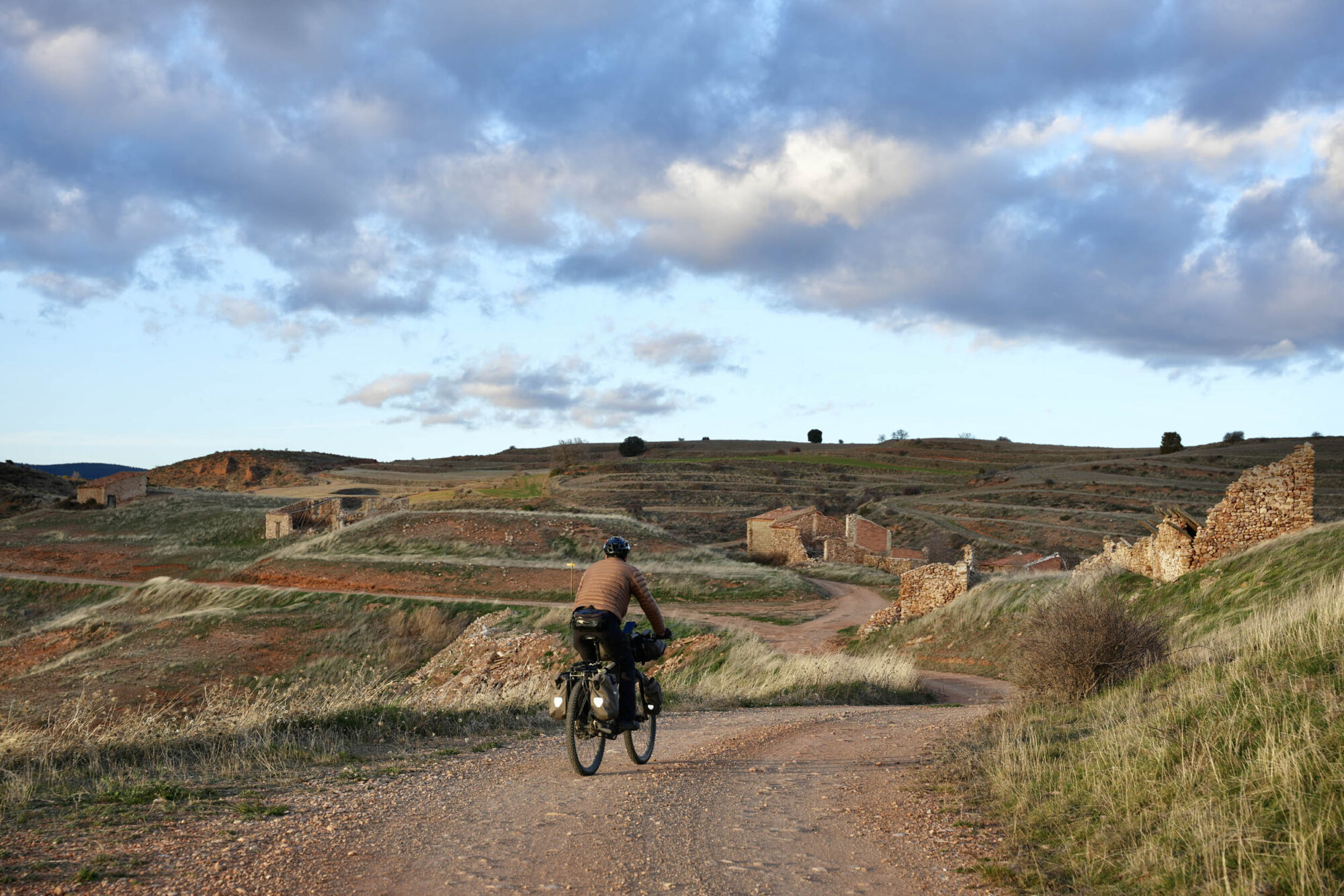
And that’s the level of local knowledge I needed you to have before telling the story of our recent ride of Ernesto’s newest route, “Of Resilience and Hope.” You see, whereas Montañas Vacias spans more than 600 kilometers, Ernesto has been hard at work in creating smaller loops, too. These serve the same purpose as their big brother but zoom in on smaller areas that are sometimes even more affected by the general cause on which they’re built: depopulation. On the Maestrazgo Loop, which I cycled last November, the prime example is the tiny town of La Estrella, hidden in a deep valley in the middle of nowhere. Its only residents are a couple of cats, a small church signals its existence from afar, and an unpaved road connects it to the outer world through two steep mountain slopes. The same repeats on the Rodeno-Algarbe Loop, where, according to Ernesto, there’s less than one person per square kilometer (0.98 inhabitant/km2) in all the area covered by the route. Of Resilience and Hope echoes that same emptiness.
Belén and I chose to ride it during a fortunate weather window in February with the intention to squeeze it into the five days we allocated for it. Slow as we are, we ended up cutting corners here and there but still ended up discovering a sufficient amount of the route to conclude that, like its siblings, it lays bare the same struggle that the entire region is caught in. As there’s little to do other than growing crops, intensively breed pigs, and maintaining a somewhat steady flow of local tourism, people of all ages flock to the larger cities on the coast, or the country’s capital, to build up an urban life, send the kids to a reputable school, and feel connected to a larger society and the benefits that come with it. Those who stay behind nowadays are mostly older homeowners, people who love the quiet, and those who wish to keep on farming. For decades now, this drainage has taken place, noticed by the locals but understood poorly and without urgency for a solution. In the eyes of the Spanish, it’s a region of hopelessness and fragility. In the eyes of Ernesto, it’s a lasting sign of resilience and hope for better days to come.
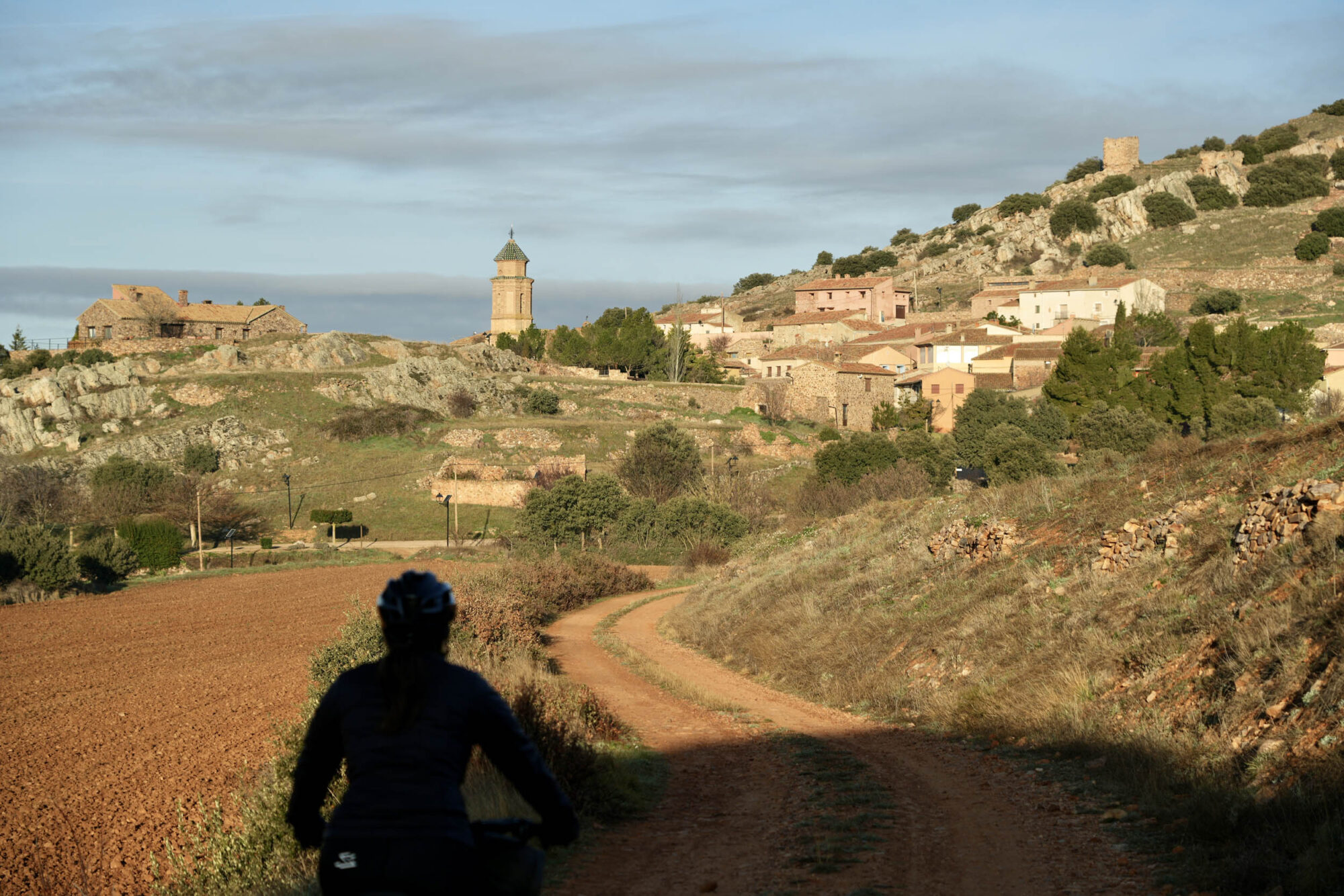
A few weeks ago, on a sunny afternoon, we parked our borrowed car in the main square of Santa Eulalia, built up our bicycles, and set off to ride the first kilometers with the hope of finding a nearby camp spot. In my home country, it would have taken several hours of conducting a careful search for a small plot of land out of sight of dog walkers, runners, angry neighbors, or the occasional forest guard, but within the wooded land surrounding Pena Palomera, a 1,533-meter mountain sitting just north of Santa Eulalia, it was almost an afterthought.
Crossing the summit of our first climb, daylight slowly departed as we set up camp by the side of the gravel track we’d been following. It took a little while for me to get used to the act of pitching a tent again as it’d been three months since I’d done so, during which I slept in a bed every night, cooked a meal with pre-cut vegetables, and took a hot shower before hitting the hay. That slightly rusty, almost awkward process of putting together the tent poles and filling my mat with a pumpsack already felt familiar and comforting, though. More so did the smell of ground coffee mixed with a cold breeze the next morning, still groggy on muscle ache from not finding the right angle on my pillow.

By noon, we’d cut across to Monreal del Campo to find a place to buy lunch, as our habitual priorities quickly exposed themselves. We somehow always carry enough food for a few days but end up disliking cold sandwiches and bruised pieces of fruit from our panniers, quickly trading them for a hot plato combinado and a cervesa sin alcohol! The difference is that, whereas this habit may prove to be an expensive and unnecessary one elsewhere, in Teruel, it has felt ironically correct. By riding and injecting a little bit of cash into a bar or restaurant, you do your part in keeping the place alive. What’s more, the owners have come to really like seeing cyclists park at their doorstep, since it’s almost guaranteed that we’ll eat a lot. I experienced this myself for the first time on the Maestrazgo Loop last year, and it became one of the warmest motivations to get off the bike a little more often and make my ride an even more memorable one.
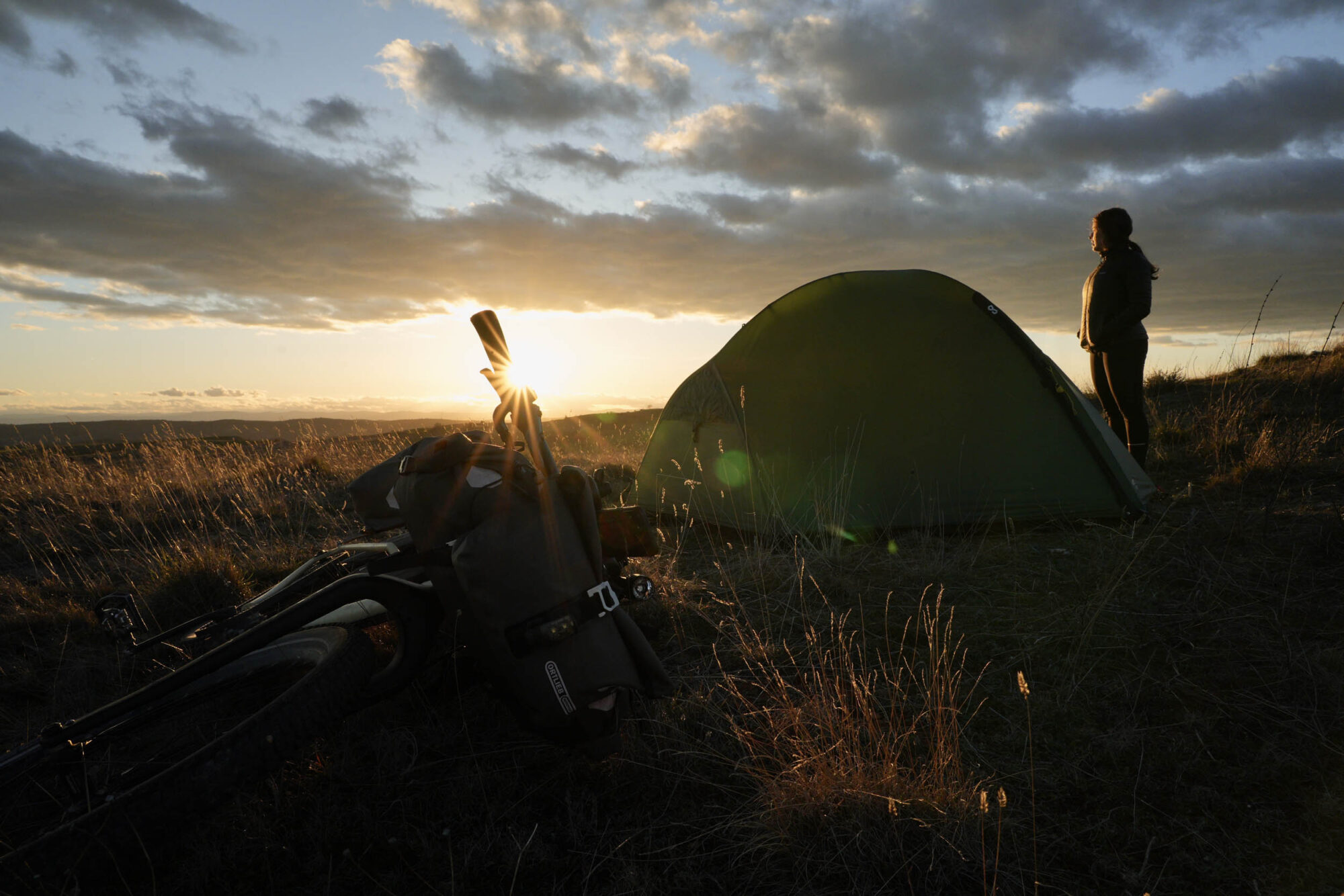
Most of our days on the route followed the routine of pitch up near a village in the evening, waking and packing up at dawn, and quickly riding down to said village for a hot brew and some tostadas. This strategy doesn’t always go to plan, as we sometimes pass the only open bar in the afternoon and sleep far beyond it, but in general, we can secure a proper desayuno every day. We did so in Gallocanta, a small village known for its proximity to Europe’s largest endorheic saltwater basin, in which thousands of cranes nestle and rest in the winter months. Unfortunately for us, these elegant birds could only be spotted through binoculars on the day we passed, as they’d retreated to the bay, which is surrounded by large swaths of protected grassland. If you’re a keen birdwatcher, you might want to keep that in mind when planning your gear list.

As for the evenings, we tried to spend them around camp, although the route offers several refugios all along its perimeter. All over the Spanish mainland, these serve the purpose of providing a free-of-charge shelter to travelers on foot or by bike, and the few we tried last year while riding the GR247 were well-kept, small buildings with some space around to pitch a tent, and some bunkbeds or other wooden construction to slide your mat onto and stay for the night. The fact that these exist, alongside small-scale hotels in most villages, is a pleasant surprise. Combine this with the public network of water fountains, Spanish culinary menu, and the reassurance of a gravel track pretty much anywhere, and I’d say it’s hard to argue that Spain is not a small slice of heaven for bikepackers.
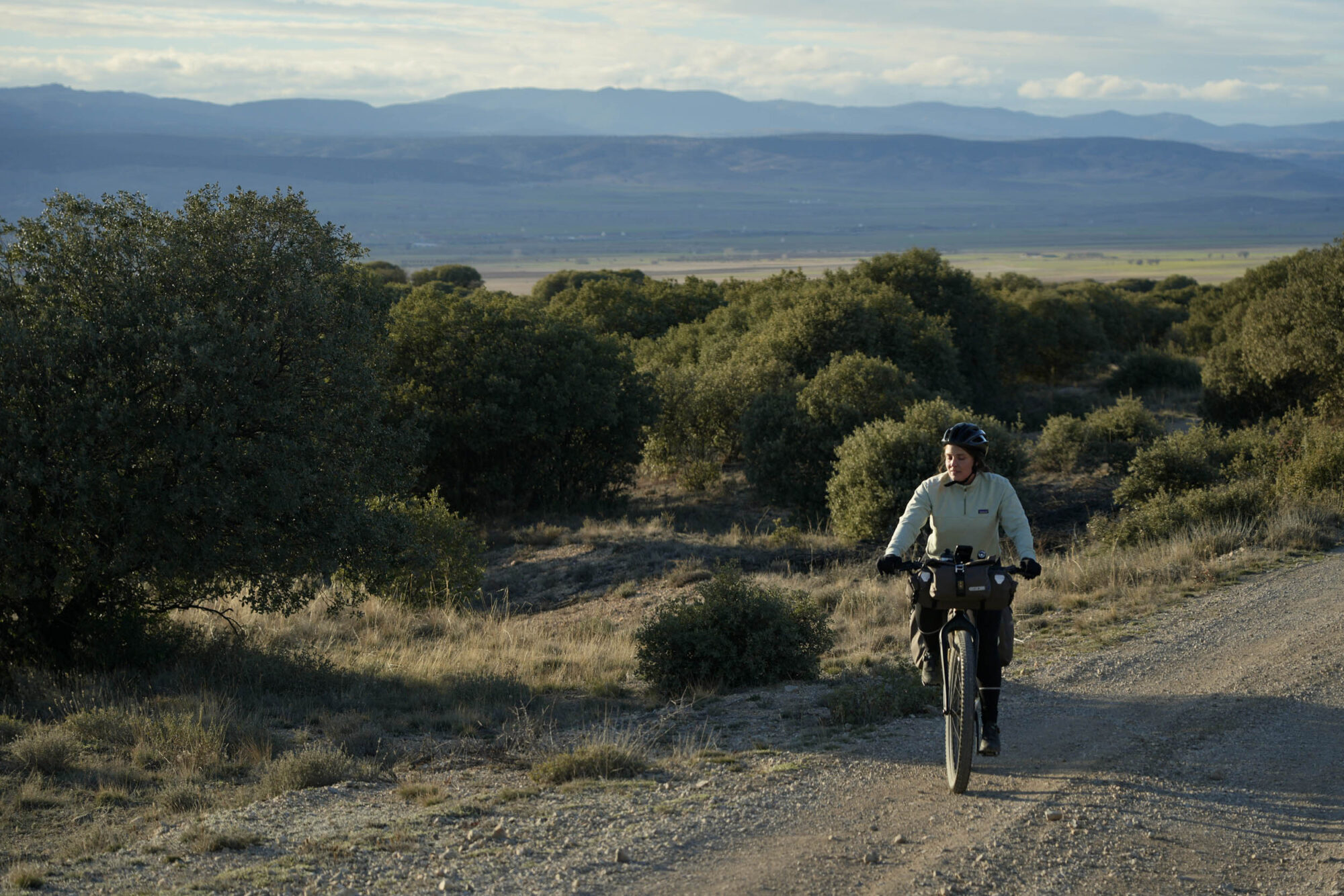
With that in mind, Belén and I finished this route with a lot of good things to say about it. The quick five days we spent riding Of Resilience and Hope solidified our opinion that if you’re looking for a place to unwind, come to your senses, and observe and—if your Spanish is sufficient enough—interact with a unique community and its stories, you should mark this one down on your list. Knowing how Ernesto develops his routes—connecting local monuments, abandoned villages, vast natural spaces, and historical knowledge into a cohesive experience that scratches the wondering mind—you can expect to be just as taken by his efforts and love for Teruel as a whole. We certainly were.
Perhaps to no surprise then, as an added bonus, he’s also created an original story that includes a beautiful set of drawings, about the story of Espe. She cycles the route and takes the reader along with her. The story fills you in on entertaining, informative, and sometimes rather somber elements I’ve left out of this article, and it’s an overall joy to read. Find that here.
Further Reading
Make sure to dig into these related articles for more info...
Please keep the conversation civil, constructive, and inclusive, or your comment will be removed.







